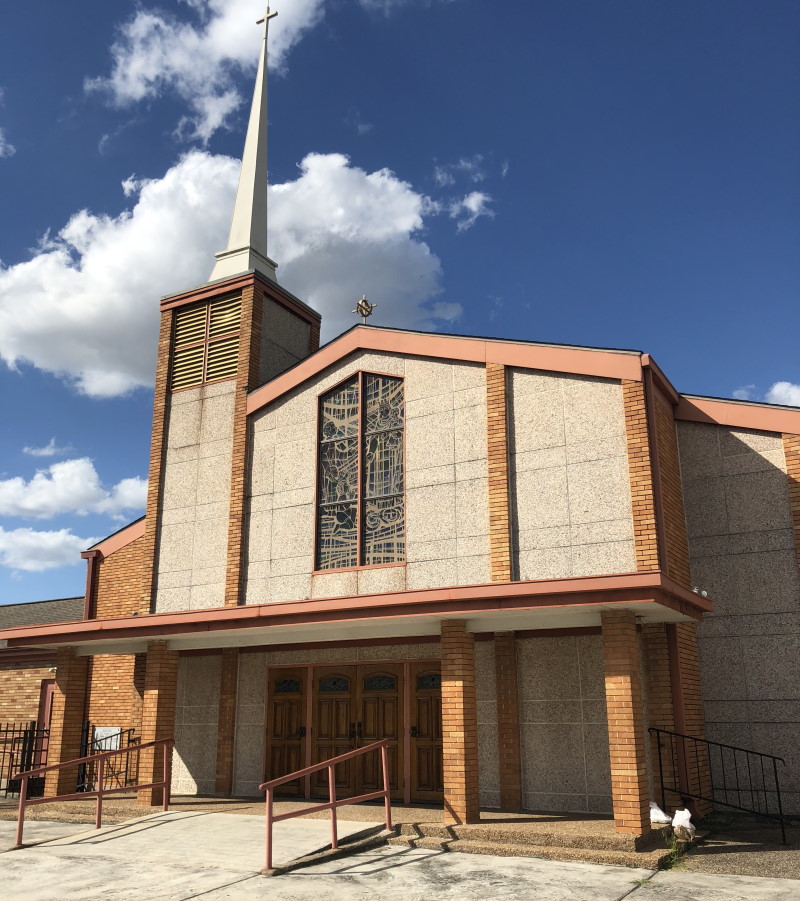Frenchtown & The 'Barbecue Ward'
Driving through Fifth Ward — the area northeast of downtown that’s known by its residents as “The Nickel” — you can’t avoid the railroad tracks. Today, the Union Pacific tracks slash diagonally though the neighborhood exactly as they did in the 1862, when they were laid as the Texas and New Orleans Railroad. The Southern Pacific Railroad would eventually take over the route, and the Union Pacific after that.
By 1880, the full route between Houston and New Orleans was complete, and many of Houston’s most important cultural traditions began to flow west from southwest Louisiana into Southeast Texas. This flow of people and traditions would become a tidal wave starting in the early 1900s as Creoles of color left Cajun Country in search of job opportunities in the booming petroleum industries along the rail corridor connecting Orange, Beaumont and Houston.
“Creoles of color” refers to the descendants of people who first populated the French and Spanish colonies of Louisiana, later identified as a mixed-race ethnic group with European, African and Native American heritage.
After World War I, Southern Pacific Railroad began recruiting Creoles of color to work along the route from southwest Louisiana to Houston. Many opted to transfer all the way to Houston, stopping just short of downtown in what is now Fifth Ward.
Frenchtown, just north of Fifth Ward, was created in 1922. Bound by Collingsworth Street, Russell Street, Liberty Road and Jensen Drive, Frenchtown became the center of the Creole/Cajun culture that would flavor and influence so much of the Bayou City’s culture and traditions to this day. The Great Mississippi Flood of 1927 resulted in a second wave of Creoles migrating to Houston and Frenchtown.
Not surprisingly, two of the most important traditions established in Frenchtown and Fifth Ward were music and food. Zydeco music took hold here and became famous at gatherings known as “La-Las” that celebrated the population’s Louisiana roots. Then, as now, the cultural and social center of Frenchtown was Our Mother of Mercy Catholic Church, where Zydeco celebrations are still held.
 Our Mother of Mercy in Frenchtown
Our Mother of Mercy in Frenchtown
This migration of Creoles of color to Texas also brought the traditions that would establish the Southeast Texas style of barbecue that first took root in Beaumont and eventually made its way to Houston.
Matt Garner, perhaps Houston’s most influential pitmaster, followed this route from Louisiana to Texas. Charles Matthew Garner was born in Opelousas, La., between 1870 and 1880. By 1920, he had married Helen Constance Garner, also from Opelousas, and the couple lived on Isla Street in Beaumont. Census records specify Garner as “mulatto,” the term used for mixed-race at the time.
They moved to Houston in 1927. According to Houstonian Ann Bandy, her father, Clay G. Wunsch, ran a commissary for the Southern Pacific Railroad where Matt Garner worked as a cook. Wunsch was so impressed with Garner’s barbecue that he helped him open Matt Garner’s barbecue stand on West Gray in Fourth Ward in 1934.
But Houston’s longest tradition of barbecue took root in Fifth Ward, when it became known as the city’s “Barbecue Ward” in the 1940s. African American-owned barbecue joints including Kozy Kitchen and Lockwood Inn featured Southeast Texas-style dishes such as all-beef juicy links.
Today, Frenchtown and Fifth Ward are neighborhoods in transition. Their proximity to downtown makes them targets for gentrification. While bumping over railroad crossings as you drive north to south, original shotgun houses are slowly being displaced by vacant lots featuring signs for new townhouse development.
Regrettably, most of the barbecue joints have closed in the Nickel, like Davis Meat Market on Lockwood and Burt’s Meat Market on Lyons.

